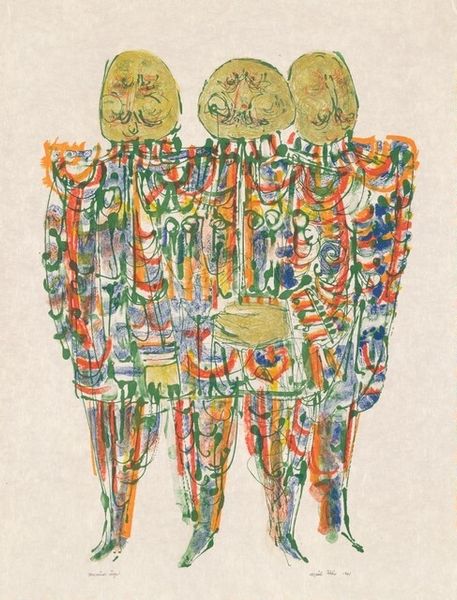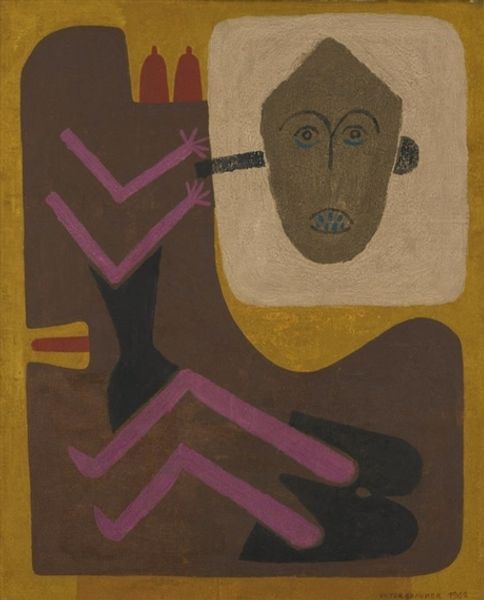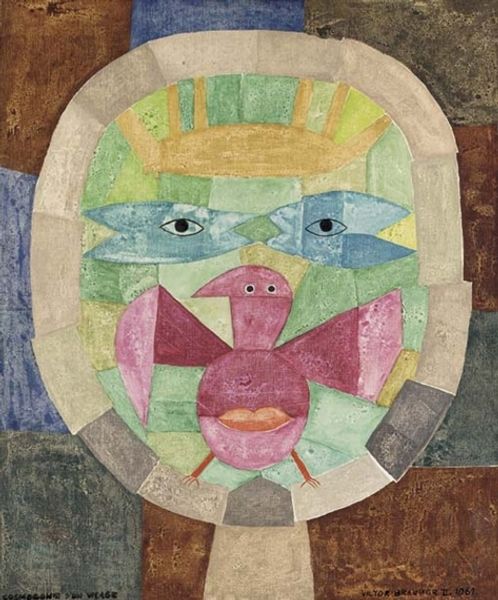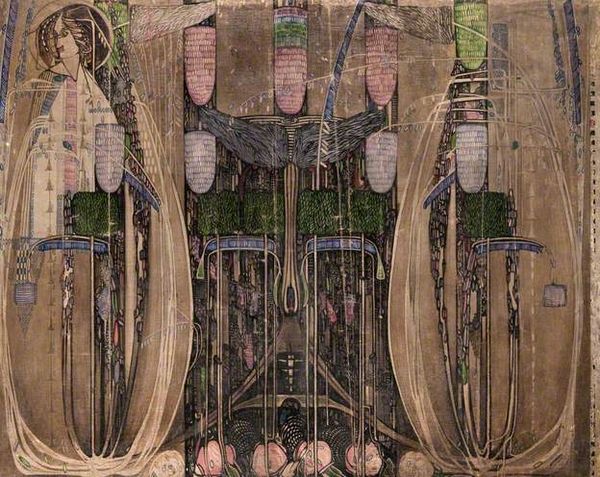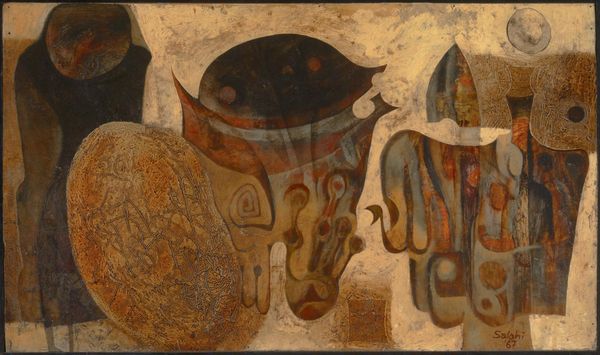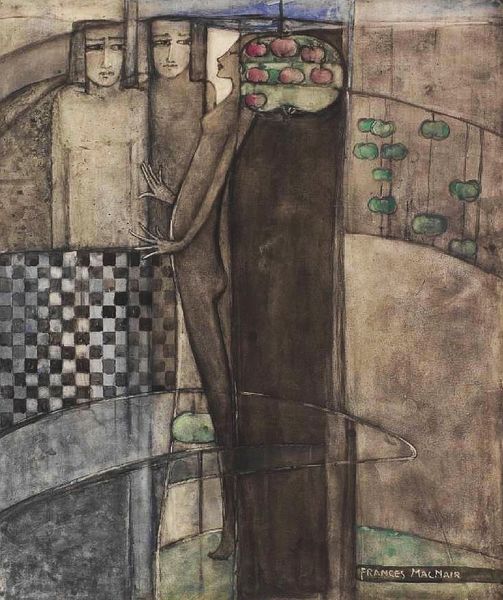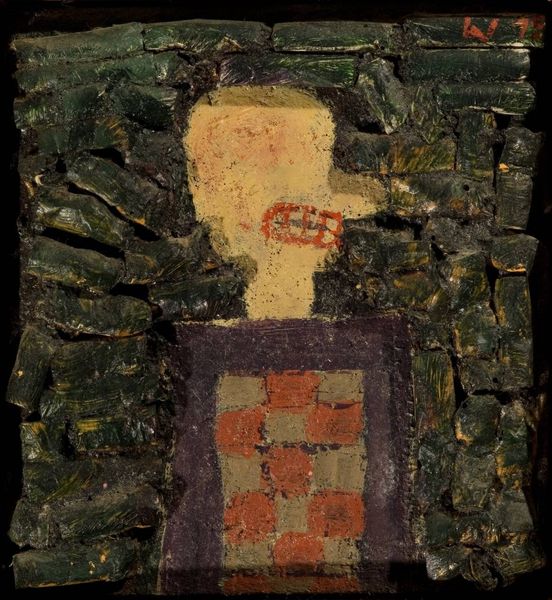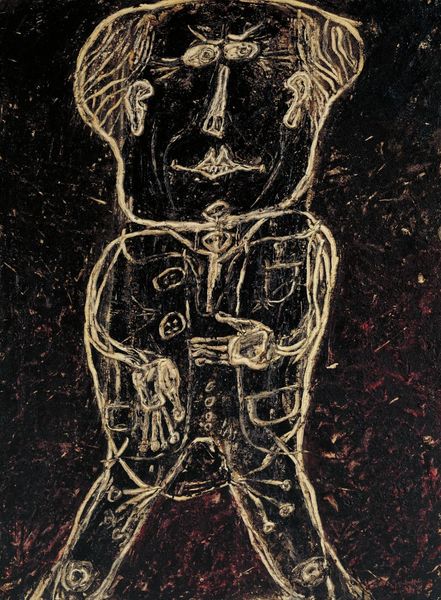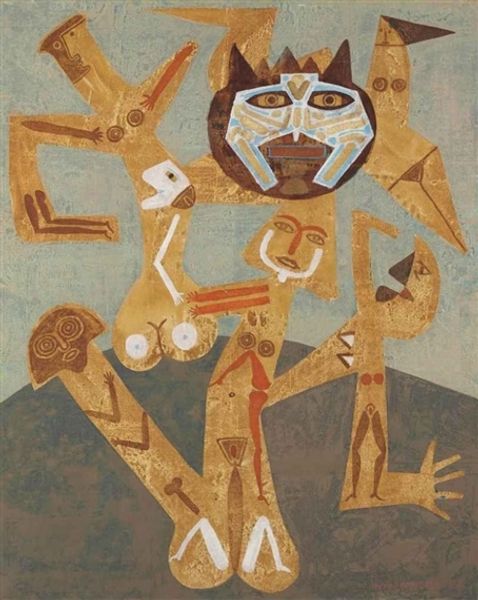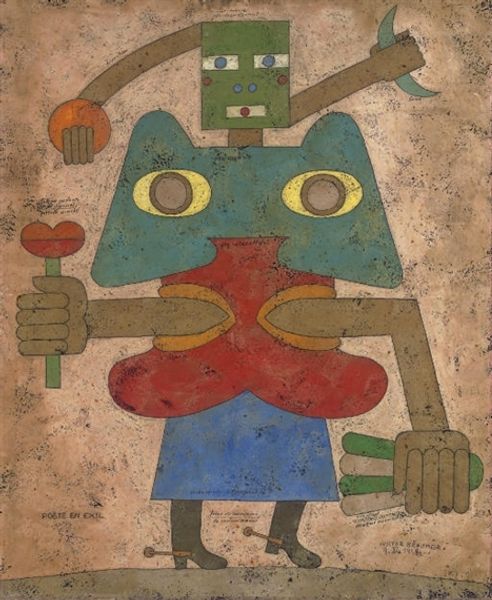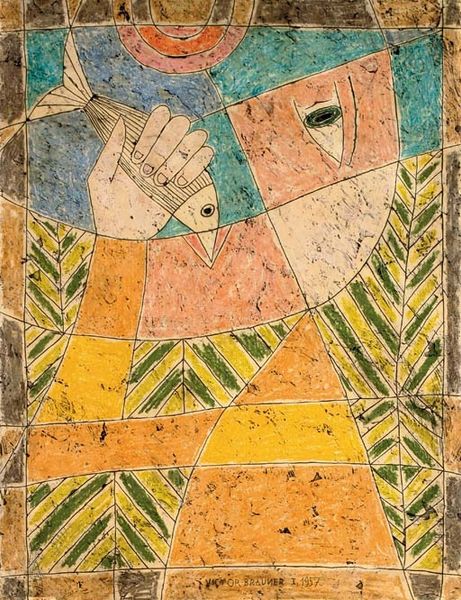
Il conte Suwrow Rjnniskj con il suo aiutante di campo durante la campagna di Russia 1965
0:00
0:00
mixed-media, collage, assemblage
#
portrait
#
mixed-media
#
collage
#
assemblage
#
anti-art
#
appropriation
#
figuration
#
pop-art
Copyright: Enrico Baj,Fair Use
Curator: Here we have Enrico Baj's "Il conte Suwrow Rjnniskj con il suo aiutante di campo durante la campagna di Russia," created in 1965. It’s a mixed-media assemblage and collage, quite striking. Editor: My first impression is bewilderment tinged with unease. The figures appear almost robotic, yet there's an unsettling human element trying to surface through the rigid forms and layers of materials. It’s simultaneously grand and grotesque. Curator: Indeed. Baj's work often satirizes authority and militarism. Consider the historical context: Post-World War II, there was widespread disillusionment and anxiety. Baj, associated with the Nuclear Art movement, explicitly critiqued the potential for destruction inherent in unchecked power. Editor: Absolutely. And within that critique, there's a very deliberate subversion of portraiture. He’s taking what was historically a form to celebrate the powerful and recasting it as something absurd, almost monstrous. The use of collage and assemblage feels critical; he is literally piecing together a parody of power using found objects and disparate materials. Curator: It reflects a broader trend in post-war art towards anti-art sentiments. The deliberate rejection of traditional artistic values can be interpreted as a reaction to the perceived failures of societal norms. Editor: I agree. Furthermore, the choice of materials feels significant. These aren’t precious materials, and some of them are overtly “kitsch,” like the toy eyeballs or trinkets masquerading as military decorations. Baj seems to highlight how constructed and performative notions of masculinity, power, and nationhood truly are. Curator: The "appropriation" tag feels particularly apt here; Baj reclaims and distorts pre-existing symbols and images to undermine their authority. Editor: Looking closely at this artwork feels relevant. It challenges us to think critically about the image, how we’re constantly bombarded with constructions of power, and how easily we accept those images without question. Baj asks us to unpack that. Curator: It makes you wonder, who exactly were figures like Suwrow representing or protecting during the Russia campaign of that time? Editor: This piece leaves me both challenged and strangely hopeful. Baj’s radical reimagining, offers a pathway towards questioning those structures ourselves.
Comments
No comments
Be the first to comment and join the conversation on the ultimate creative platform.

